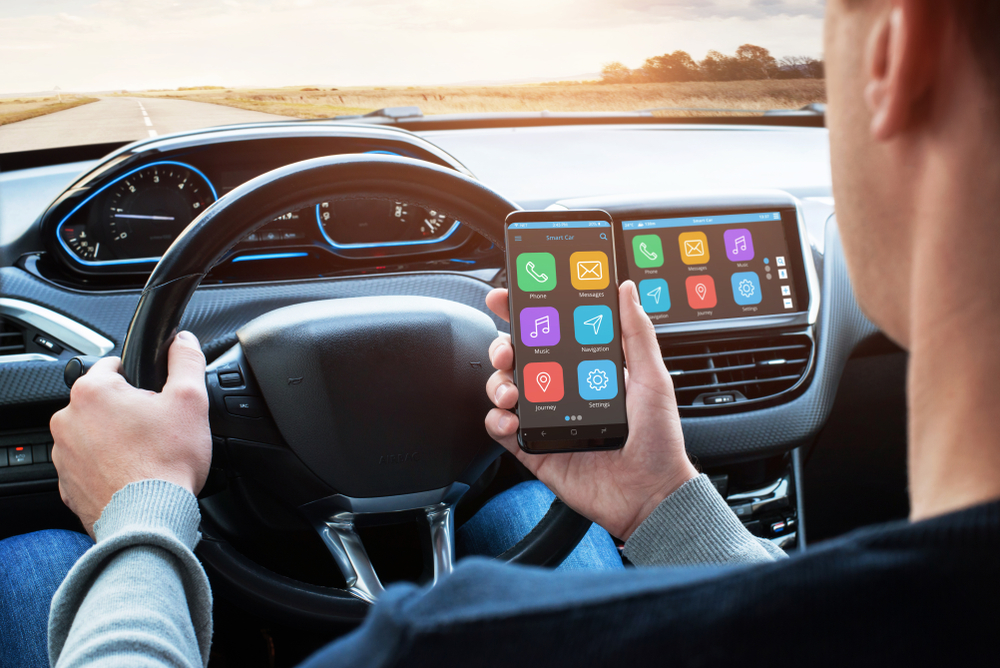Are in-car ordering apps the next big thing to hit the restaurant industry?
According to a 2019 survey by OnePoll, Americans spend on average more than 8 hours a week in their cars.
A figure that is likely to be significantly higher for those in areas plagued by heavy commuter traffic.
So it’s not surprising that in-car radio, traditional roadside billboards and even vehicles themselves have been used for many years as advertising platforms.
But a new form of marketing to drivers is emerging: in-car ordering apps.
Why Traditional In-Car Marketing Doesn’t Work
And for local restaurants, in particular, they can be very successful.
The problem is that they allow for little if anything in the way of the direct interaction between restaurant and customer that is increasingly seen as crucial in the 2020 hospitality industry.
It’s difficult, if not impossible, for outlets to monitor the effectiveness of particular marketing campaigns, while customers restricted to their cell phones are unable safely and legally to ask questions or place orders.
But new in-car solutions are now changing the game.
The Modern Restaurant Technology Solution
Major auto manufacturers and restaurant technology providers, such as BMW, General Motors, Olo and Xevo, have been co-operating to provide customers with reservation and ordering options, while allowing businesses to reach drivers and passengers directly and in real-time through their car infotainment touchscreens.
Restaurants can use vehicle location information to precisely target promotional offers in real-time, and the in-car system will also help them navigate to the nearest relevant outlet.
Drivers can make a reservation, order and pay, all from the one enabled screen, which will also store their favorite menu options, preferred payment options, and even allow them to create accounts with new restaurant brands.
These in-car systems also now integrate seamlessly with restaurant loyalty programs, allowing vehicle owners who are members to accrue and redeem points just as they would if they were at home or ordering at their table.
Restaurants, meanwhile, can make use of all the marketing advantages of their loyalty programs, even while their members are on the road.
Who’s Providing and Using these Systems
Domino’s Pizza, Nektar Juice Bar and Portillo’s Hot Dogs are just some of the big names to have taken advantage of this technology, while GM’s Marketplace system allows users to use in-car ordering apps for Starbucks and Wingstop, amongst others.
Studies by Pymnts.com and Visa suggest that around 35% of Americans have already ordered food from their cars, and a similar percentage have ordered takeaway coffee.
And, importantly, those who have adopted this technology typically use it around 65 times a year, presenting those restaurants that are ready to get on board with an excellent marketing opportunity.
To underline this point, it’s worth noting that the number of cars on the road that carry the necessary systems nearly doubled between 2017 and 2019, from 33 to 64 million.
More importantly, industry sources estimate that by 2020 some 98% of new cars will be equipped with internet and WiFi capabilities.
In-car Ordering Apps and the Impact of COVID-19
So the direction of travel was clear even before the disaster of the COVID-19 pandemic.
And with the stimulus given by the virus to curbside pickup and carry-out options, the trend is only likely to increase in pace.
The technology may so far have been primarily used by household name brands, there’s no intrinsic reason why local outlets should not also benefit from it.
All that’s necessary is a willingness to innovate.

